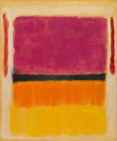Abstract
This study traces the appearance and relevance of love motifs in Sanskrit texts. It deals with preclassical, classical and medieval literature, with excerpts from the Vedic scriptures, the epics, the normative texts and the courtly formalized Kāvya. Attention is paid to the change in the status of women, whose position becomes gradually more subordinate over time. Several conventional topoi of Sanskrit erotic literature are examined, such as love enjoyed in the union of the lovers, or suffered in their separation; divine love; the traditional belief that women are more passionate than men; the different religious/philosophical schools' outlook towards love; love in the dramatic theory of aesthetic experience; the importance of marriage, and marital love as opposed or complementary to illicit love. Finally there is a brief survey of a few scientific disciplines that have something to say about the experience of love, like Āyurveda, astronomy/astrology, and the treatises on Dharma and those on the science of government.
Except where otherwise noted, the content of this site is licensed under a Creative Commons Attribution-ShareAlike 4.0 International (CC BY-SA 4.0).
Authors retain copyright of their work. The CC BY-SA 4.0 licence allows readers to copy and redistribute the material in any medium or format, and to remix, transform, and build upon the material for any purpose, even commercially, as long as the original author is credited and as long as any works that are derived from the original are distributed under the same terms.

